If I asked you how much a house cost, could you give me an answer? The answer is likely no because there’s no such thing as a universal price, even for an identical house. You’ve heard it before—location, location, location.
A similar property has a different price tag in Toronto, Paris, São Paulo, Cairo, Seoul, and Bangalore. The same could also be true for your SaaS business.
In our B2B SaaS Pricing Masterclass, we detail the importance of SaaS pricing and how to get it right for your audience. We also shared that revisiting your monetization strategy is an essential part of growing your business. While some companies might want to stick with the rates that work right now, there may come the point where you can’t rely on growing your market share at the same rate as your company’s early days.
One way your pricing can change as your company evolves is by using multi-currency pricing. Here’s what you need to know about SaaS pricing localization.
What is pricing localization?
Pricing localization is a strategy where you present the price of your SaaS differently depending on where the customer lives. You may also hear it referred to as multi-currency pricing or localized pricing.
Even the simplest pricing localization method requires new workflows and considerations, so it’s understandable if you’re apprehensive about jumping in feet first. Here are some of the benefits of SaaS pricing localization that can make the transition worthwhile:
- Potential customers may feel more comfortable when they browse your pricing page and see their local currency
- Optimizing pricing for different countries could help you grow your market share in a region
- Experimenting with localized pricing lets you find the ideal strategy for each country and increase revenue
2 types of pricing localization
Not all pricing localization strategies are created equally. There are two to choose from, and they each come with their benefits and challenges.
Change your display currency
The first and most straightforward type of pricing localization is where you only change the currency shown. This localization strategy is also called “cosmetic” localization. When you use this strategy, customers avoid any sticker shock at checkout or after payment since they see the price they’ll pay upfront. Having local pricing also makes it easier for potential customers to imagine the cost in their budget without mental math for the exchange rate.
For example, Hotjar shows pricing in local currency for select countries. The America pricing page has plans starting at $99 while French browsers see prices from €99. In this scenario, the pricing strategy is the same, and the only variable is the currency that customers see and use.
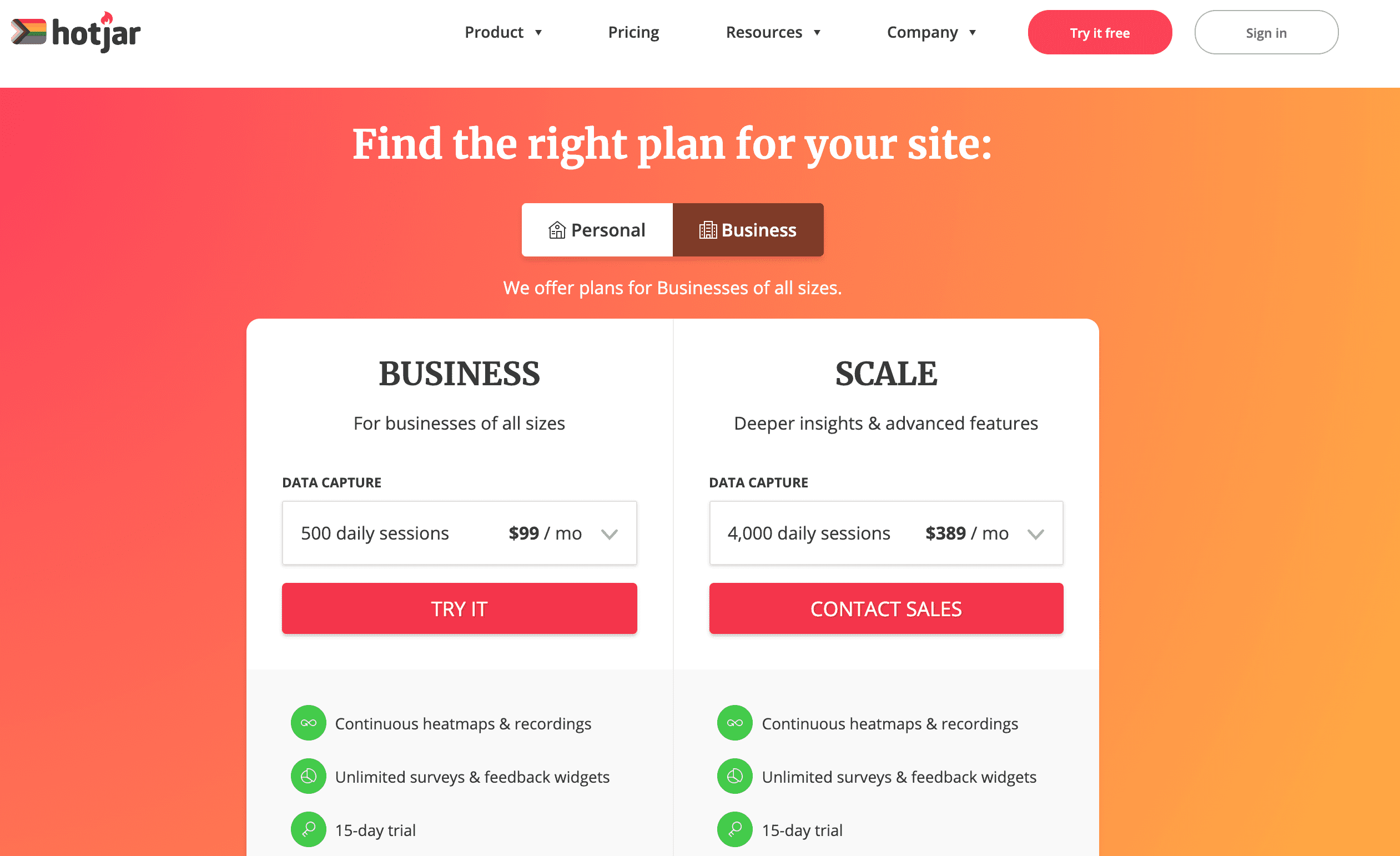
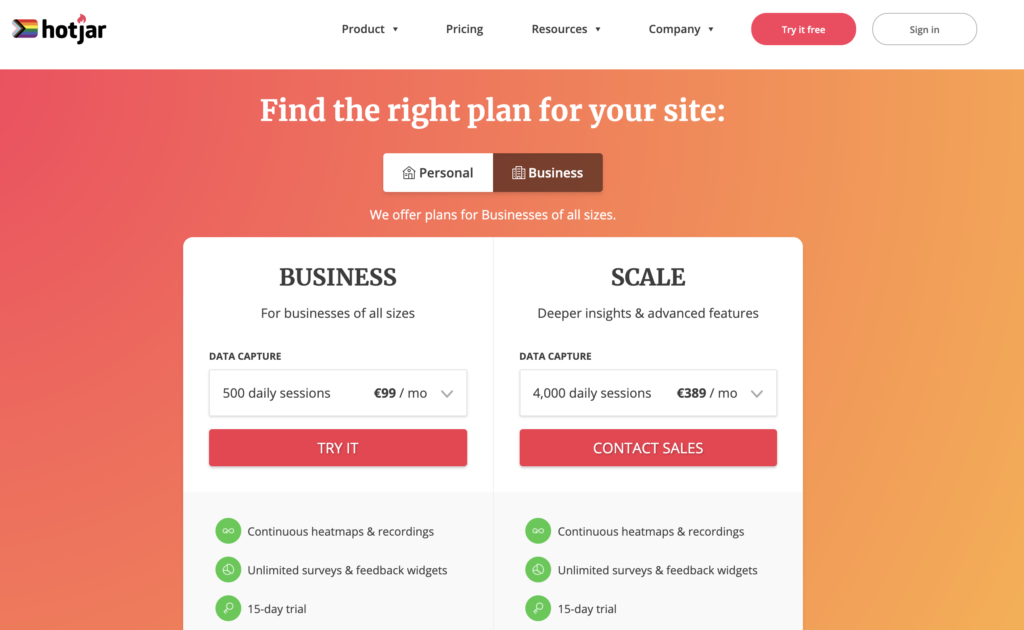
The benefit of cosmetic pricing localization is how simple it is to implement. There’s no need to adjust your pricing strategy or tiers—simply update the currency based on the person’s location. This pricing localization strategy works best when the exchange rate and cost of living between the base currency and display currency are similar.
Change your product cost
The second type of SaaS pricing localization is more strategic than a simple cosmetic change in currency. Instead, you can customize your pricing based on your customer’s cost of living and purchasing power and have “true” localization.
A country or region with a higher cost of living or exchange rate closer to your home currency has a similar or identical price to home. A country with a lower cost of living or buying power pays a proportionally smaller price.
Netflix uses a true pricing localization strategy to the fullest extent, with special pricing for many of the 190 countries it serves. Monthly pricing varies by location and is either displayed in local currency or USD. If you ever wondered what Netflix costs in Japan, Afghanistan, Swaziland, you can browse pricing here.

Wondering how SaaS companies come up with these local prices? While we don’t have the inside scoop on Netflix’s exact pricing strategy, you can use the Big Mac Index. Yes, that’s the real name. The Economist compares the price of a Big Mac across the world using the same base currency, like USD. You can use this tool to compare pricing using your base currency.
Here’s an example. Imagine your entry-level plan is $10 a month USD, and you want to localize to Russia. If you use the proportion for the current Big Mac Index ($5.67 in the US vs. $2.20 in Russia), you would divide your base price by 2.5 (the Big Mac ratio) for a Russia-localized price of $4 a month USD.
While customizing your SaaS pricing based on the cost of living is more work than changing the display currency, it could be the way to go for some regions. If you want to expand to markets with very different economics than your own (whether they have more or less purchasing power), true pricing localization makes you a more accessible option. Pricing localization may even give you a competitive advantage if you’re the only option doing it.
Though it might be hard to quantify, it’s also possible that customizing a sales page to a person’s location could feel more personal.
How to decide when to use localized pricing for your SaaS
If you’ve read this far, chances are you’re curious about trying SaaS pricing localization on for size. Here are a few questions to ask yourself to see if it’s time to experiment with multi-currency pricing.
If pricing plays a critical role in your positioning
Before you start changing your pricing, you need to think about your customers in each region. For subscription apps like Headspace, a global audience is part of their growth ambition. Cristina Poindexter, former Product Marketing Lead at Headspace talked about price localization strategies and how it aligns with their goals of bringing mental health to the world.
Her recommendation is to begin your pricing localization discussions with positioning. Talking about whether you want to be a premium product or mass-market solution upfront makes every other pricing localization decision easier. If you want to hear more about Headspace’s experience with pricing localization, this discussion in partnership with Google Play is worth watching.
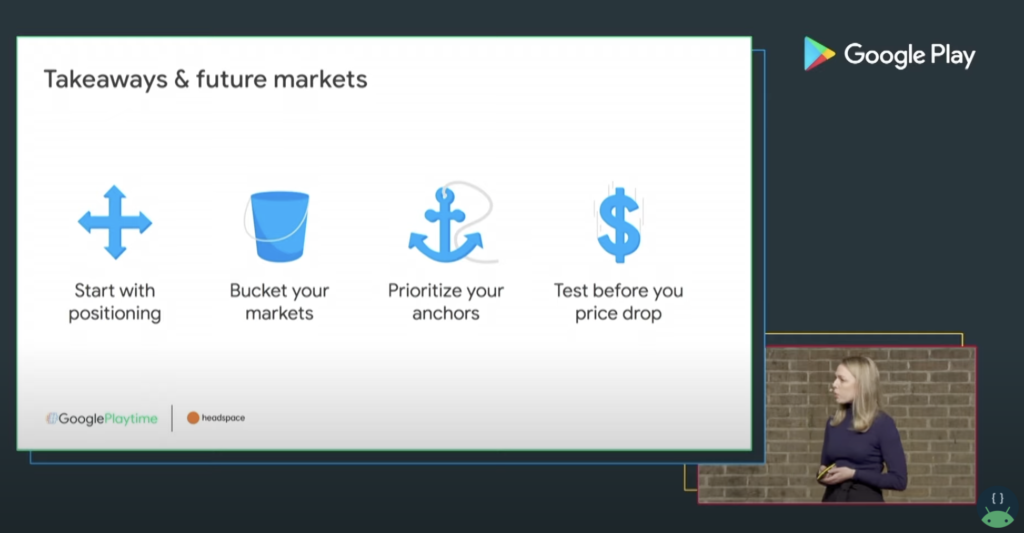
If you’re at a stage where you want to appeal to as many SMBs as possible, then a competitively low price could be ideal. In that case, true pricing localization that makes your cost attainable in your target countries could be the way to go.
On the other hand, there can be such a thing as a “too low” price for enterprise customers if it makes them feel that you can’t handle their scale. If a higher price is essential for positioning, a less complicated cosmetic localization strategy offers easier customization. It’s also worth noting that it’s easier to lower existing prices than raise them, so experimenting with higher prices is worth exploring.
If you have (or want) a global audience
Until you have a solid pricing strategy at home, you likely don’t need to sweat the small details of global pricing localization. Earlier stage companies that focus on capturing more of their existing potential TAM (total addressable market) in one country or region can skip pricing localization for now. If you want to grow in a specific country or notice more and more customers from a region, then you can consider localized pricing.
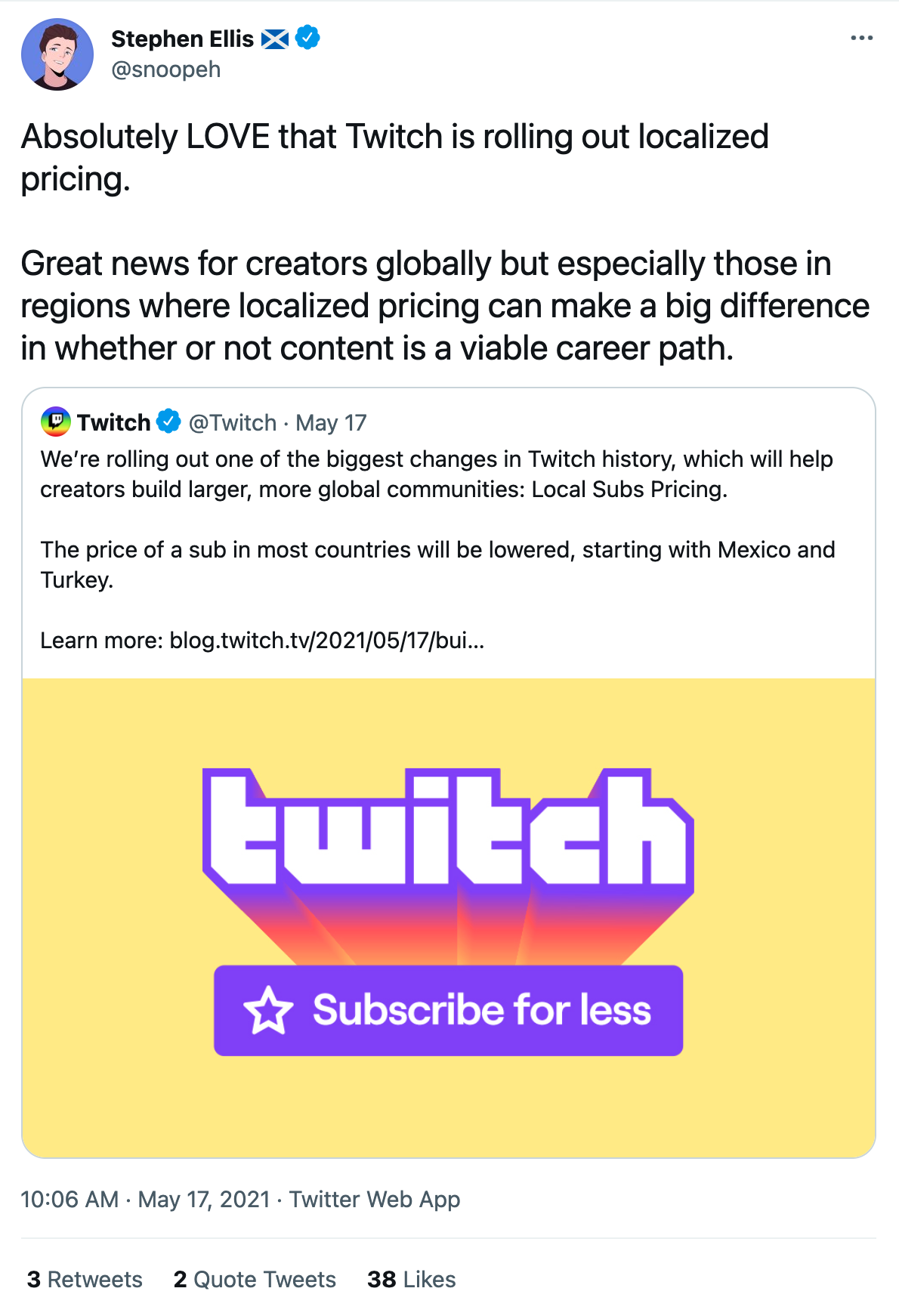
When Twitch announced localized pricing in May of 2021, Stephen Ellis, founder of Pipeline, commented on how the change would benefit global creators. Stephen shared that, “the hope [with localized pricing] would be that this ultimately makes it possible for MORE creators to make revenue on Twitch and more fans supporting their fav creators.”
If conversion rates are much lower for a country or region
Maybe you’re here because you’ve realized that as hard as you’re trying to break into a new market, you just aren’t gaining the traction you’d like to see. It’s possible that pricing could be to blame, particularly if it’s a country with a vastly different cost of living. Pricing alone isn’t necessarily the culprit, but something to experiment with.
Trying price localization could also help if you want to grow in a region where you’re nearing the ceiling of the total addressable market. Rather than adding new customers at the same rate as you used to, you could try customizing pricing to reach your revenue goals.
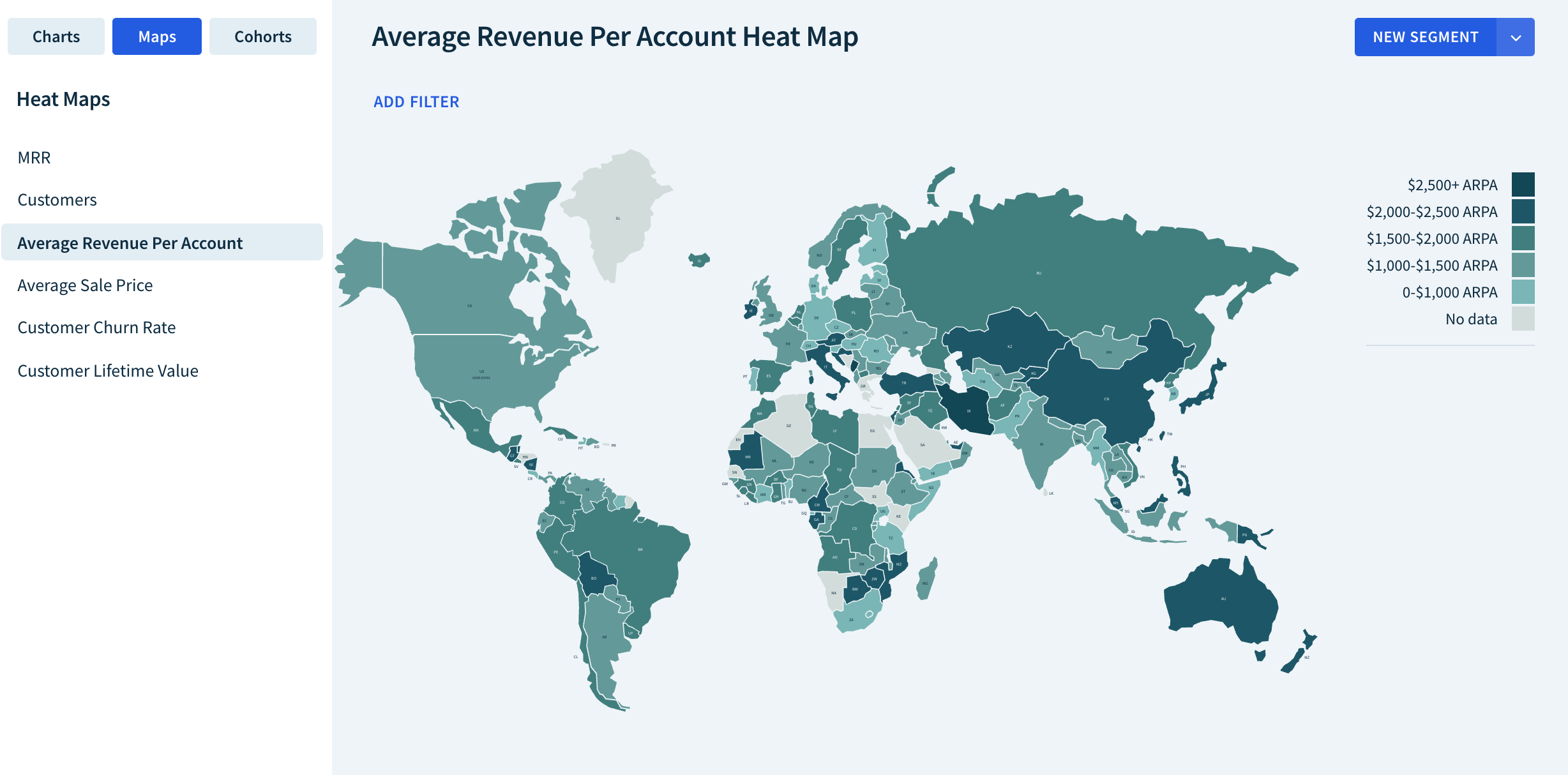
ChartMogul can help you understand your customers and where they are hailing from and answer questions like: Which regions or countries have the highest Average Revenue Per Account? Where is churn most prominent?
What to expect when you take on multi-currency pricing
Your wheels are turning now, and you think you want to pitch the idea of pricing localization to your team. The only problem? It’s going to be a team effort. Implementing a new and variable pricing strategy comes with many moving parts, and everyone has a role.
Your marketing team needs to manage positioning
Questions about the impact of pricing on your positioning will likely go to the marketing team. They’ll need to research the market you want to enter (or optimize) and understand how pricing affects decisions.
Questions for your marketing team to explore:
- How are competitors pricing their tiers in the country?
- What do buyers in this country look for in a SaaS?
- Does our messaging need to change alongside the pricing update?
Your product team needs to customize displays by location
If your website is currently the same wherever you access it, some updates to the pricing page are necessary. The simplest route would be creating a guide where people can browse pricing by country, as Netflix has. To make it seamless, though, you’ll probably want your pricing page to update based on a person’s location.
Questions for your product team to explore:
- How many versions of the pricing page will we need?
- How will we update pricing based on location?
- Does pricing localization also impact other steps in the checkout and billing process?
Your finance team needs to manage multi-currency invoices
Unsurprisingly, your finance team will probably have the most adjustments to handle when switching to localized pricing. While you’ll still manage your accounting in your home currency, things like invoices and typical payments will vary between customers.
Questions for your finance team to explore:
- How will we manage multi-currency invoices, contracts, revenues, and payments?
- What tools will help us manage conversions between currencies?
- Are there any tax or accounting implications to managing multiple currencies and countries?
Your sales team needs to monitor fluctuating MRR
In ChartMogul, you can set your primary currency, whether it is EUR, USD, or the currency where your business is headquartered. When ChartMogul comes across an invoice that is billed in a different currency, it will automatically convert the MRR amount to your account’s primary currency. Your ‘Primary currency’ is the currency in which your revenue is reported in your ChartMogul account. We found that this is the most common and useful way in order to track subscription metics.
If your global customers pay different amounts, our projections and reporting will vary. Even if you go the simpler route of “cosmetic” localization, you still need to manage exchange rates. This means that metrics like your MRR will fluctuate, even if there aren’t actual changes in accounts.
Questions for your sales team to explore:
- How will we adjust reporting and analysis to account for exchange rate fluctuations?
- Do we need separate goals and benchmarks for each region?
- How do we expect pricing to impact close rates?
ChartMogul helps you manage global subscriptions
You can’t manage what you don’t measure, but luckily for your teams, ChartMogul makes it easy to monitor global subscriptions. Our subscription analytics platform helps you measure, understand, and grow your recurring revenue.
There are also features to help you manage exchange rates, so you have an accurate view of MRR and change your base currency at any time.
Curious about ChartMogul? Learn why you need it here.
